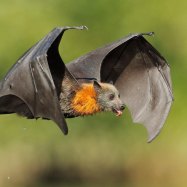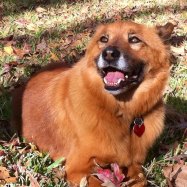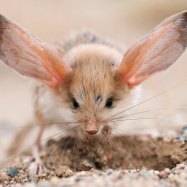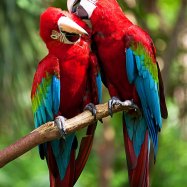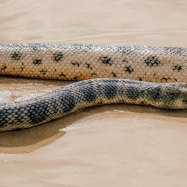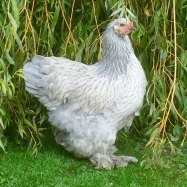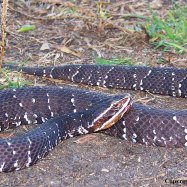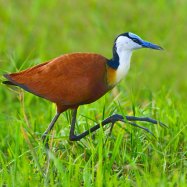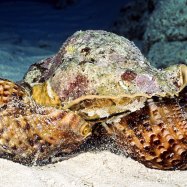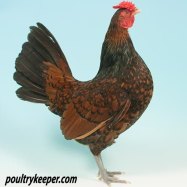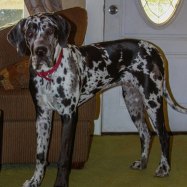
Northern Bobwhite
24-28 cm (9.4-11 in)
Meet the Northern Bobwhite, a compact and plump North American bird known for its distinctive Bob-white call. Standing at 24-28 cm, this charming creature belongs to the Odontophoridae family and can be found throughout North America. Keep an eye out for these adorable birds on your next outdoor adventure! #NorthernBobwhite #NorthAmerica #Birdwatching #NatureLovers
Animal Details Summary:
Common Name: Northern Bobwhite
Kingdom: Animalia
Habitat: Grasslands, agricultural fields, open woodlands
The Northern Bobwhite: The Enduring Icon of North America
In the vast and diverse expanse of North America, there is one bird that stands out among the rest, a symbol of the untamed wilderness and a testament to the resilience of its habitats. The Northern Bobwhite (Colinus virginianus) is a beloved and iconic species found throughout North and Central America, from the United States down to Central America. Despite facing challenges from human activities and habitat loss, this charming and charismatic species continues to thrive and captivate the hearts of bird enthusiasts and nature lovers. Let's take a closer look at this remarkable bird, its fascinating attributes, and its important role in the ecosystems it inhabits Northern Bobwhite.Overview and Taxonomy
The Northern Bobwhite is a member of the class Aves, making it a feathered friend and cousin to other birds such as the majestic bald eagle and the tiny hummingbird. Its scientific name, Colinus virginianus, comes from its genus, Colinus, meaning quail, and its species, virginianus, which refers to the state of Virginia, where the bird was first discovered and described. The Northern Bobwhite belongs to the family Odontophoridae, which includes other quail, such as the California Quail and the Gambel's Quail. Its order, Galliformes, includes other game birds like grouse, pheasants, and turkeys.Habitat and Distribution
The Northern Bobwhite is a ground-nesting bird that can be found in a variety of habitats, including grasslands, agricultural fields, and open woodlands. It prefers areas with a mix of cover and open space, making it a common sight in hedgerows, brushy fields, and croplands. In the colder months, it may also be found in larger groups in fencerows and wooded areas.This charming bird is found throughout North and Central America, from the United States down to Guatemala. In the United States, it can be seen in every state except for Alaska, and its range extends north into Canada and south into Mexico Nguni Cattle. Its adaptability and wide distribution make it a true representative of the diversity and resilience of North American wildlife.
Physical Characteristics
The Northern Bobwhite is a compact and plump bird, measuring around 24-28 cm (9.4-11 in) in length. It has a round body with a short tail and a small head adorned with a distinctive black and white striped crown. The bird's most prominent features are its striking brown and white coloration, with a cream-colored throat, belly, and breast and a bold black and white pattern on its back and wings. The female is similar in appearance to the male, but with a less defined head pattern.Other physical characteristics that make the Northern Bobwhite easily recognizable are its short legs and strong feet, which are adapted for running fast on the ground. Its two toes point forward, while the other two point backward, giving it a more stable footing while walking and running.
Behavior and Diet
The Northern Bobwhite is a social bird, often forming pairs or small groups called coveys outside the breeding season. During the breeding season, males become more territorial, and coveys break up into smaller groups consisting of a single male and several females. These birds communicate through a variety of sounds, including whistles and short, low-pitched calls.As a granivorous bird, the Northern Bobwhite feeds primarily on seeds from grasses and broadleaf plants. It has a unique digestive system that allows it to digest hard seeds and even store them in a specialized part of its digestive tract called the gizzard. In addition to seeds, it also consumes insects and fruits, making it an omnivore and giving it a more diverse diet.
Threats and Conservation
The Northern Bobwhite has faced significant declines in some areas of its range due to habitat loss and fragmentation caused by agriculture, urbanization, and changes in land management practices. These threats continue to be a challenge for this species, and conservation efforts are ongoing to protect and restore its habitats.One of the major conservation initiatives for the Northern Bobwhite is the creation and maintenance of grassland habitats through the use of prescribed fire, rotational grazing, and other land management techniques. These efforts not only benefit the Northern Bobwhite but also other grassland species, such as prairie chickens and grassland songbirds.
In addition to habitat loss, the Northern Bobwhite also faces predation from domestic and feral cats, as well as collisions with cars and buildings. Climate change is also a potential threat, as it could bring changes to the bird's preferred habitats and alter the timing of breeding and migration.
The Northern Bobwhite and Humans
The Northern Bobwhite has a long history of interactions with humans. It has been hunted for sport and food for centuries, with records showing Native Americans and early European settlers using the bird for food and feathers. Even today, it is one of the most hunted birds in North America, with an estimated 5-6 million Bobwhites harvested annually.Aside from hunting, the Northern Bobwhite has also been utilized in research to study various aspects of ecology, behavior, and habitat management. Its use in this field has helped to inform conservation efforts and improve our understanding of its needs and behaviors.
In Conclusion
The Northern Bobwhite is a beloved and iconic species of North America, with its distinct appearance and behaviors captivating the hearts of bird enthusiasts and nature lovers alike. As a reminder of the wild and diverse habitats of the continent, it serves as a symbol of our responsibility to protect and conserve the natural resources that sustain us all. With continued efforts and conservation initiatives, we can ensure that this remarkable bird continues to thrive and inspire future generations.Further Reading:
1. https://www.allaboutbirds.org/guide/Northern_Bobwhite/overview
2. https://www.audubon.org/field-guide/bird/northern-bobwhite
3. https://www.birdwatchingdaily.com/birds/bird-profiles/bobwhite-quail/
4. https://defenders.org/wildlife/bobwhite-quail
5. https://www.nature.org/en-us/get-involved/how-to-help/animals-we-protect/northern-bobwhite-quail/
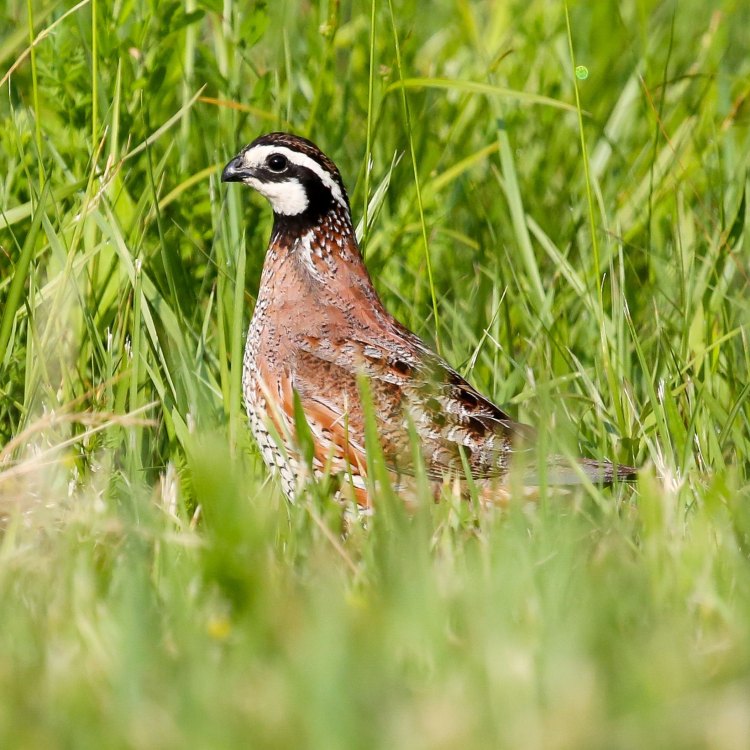
Northern Bobwhite
Animal Details Northern Bobwhite - Scientific Name: Colinus virginianus
- Category: Animals N
- Scientific Name: Colinus virginianus
- Common Name: Northern Bobwhite
- Kingdom: Animalia
- Phylum: Chordata
- Class: Aves
- Order: Galliformes
- Family: Odontophoridae
- Habitat: Grasslands, agricultural fields, open woodlands
- Feeding Method: Granivorous
- Geographical Distribution: North and Central America
- Country of Origin: United States
- Location: Throughout North America
- Animal Coloration: Brown and white
- Body Shape: Compact and plump
- Length: 24-28 cm (9.4-11 in)
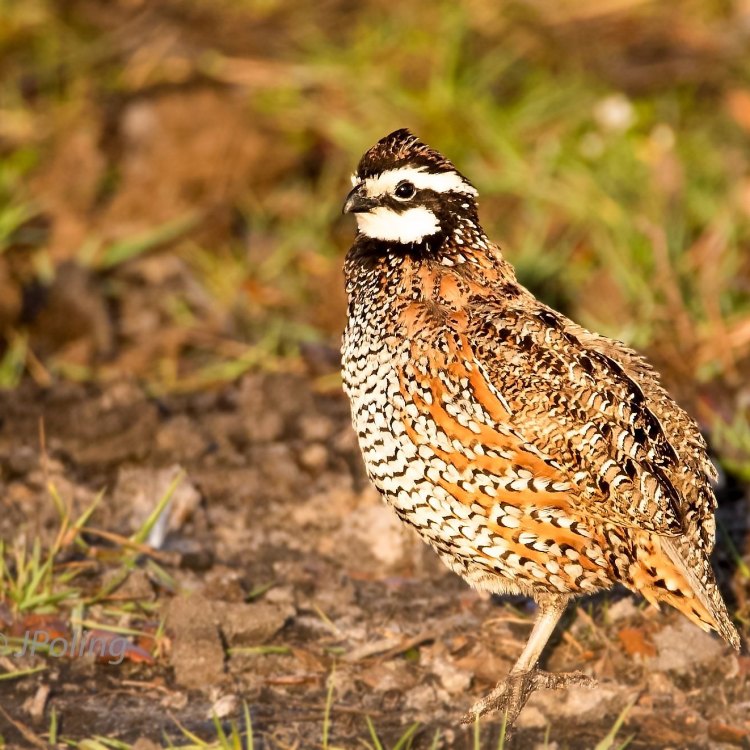
Northern Bobwhite
- Adult Size: About the size of a small chicken
- Average Lifespan: 1-3 years
- Reproduction: Sexual
- Reproductive Behavior: Monogamous
- Sound or Call: Distinct two-part whistle
- Migration Pattern: Non-migratory
- Social Groups: Solitary or in small groups
- Behavior: Ground-dwelling, spends most of its time on the ground
- Threats: Habitat loss, predation, hunting
- Conservation Status: Least Concern
- Impact on Ecosystem: Seed dispersal
- Human Use: Hunting, conservation efforts
- Distinctive Features: Bold face pattern with white throat and eyestripes
- Interesting Facts: Bobwhites are named after their distinctive call, which sounds like 'bob-white' or 'bob-bob-white'
- Predator: Coyotes, foxes, raccoons, hawks, skunks
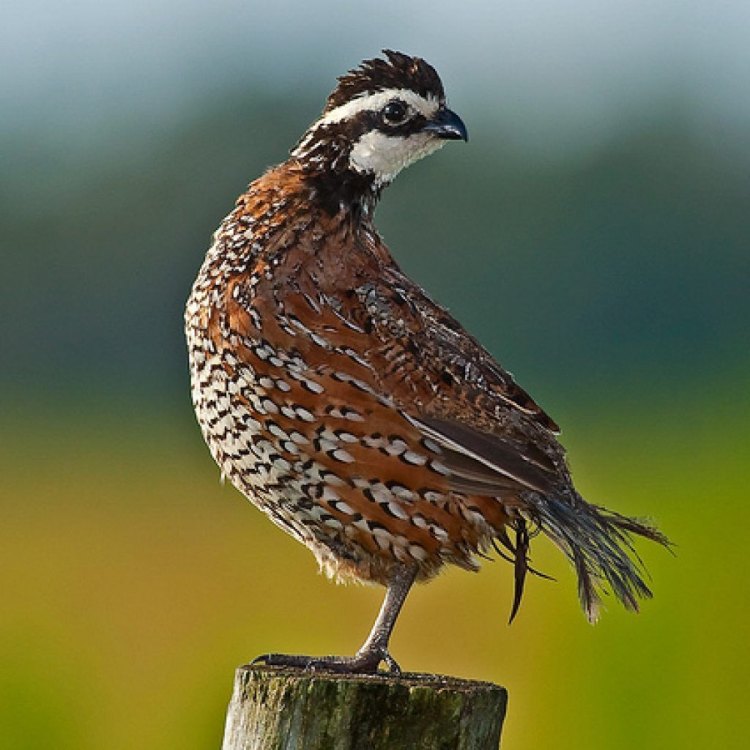
Colinus virginianus
The Fascinating World of Northern Bobwhites: Survivors of the Wild
When we think of birds, we often picture them soaring through the sky or nesting high up in trees. But have you ever heard of a bird that spends most of its life on the ground? Meet the Northern Bobwhite, a small and charismatic bird that is known for its unique behavior and striking appearance.As its name suggests, the Northern Bobwhite is native to Northern America and can be found in the United States, Canada, and Mexico. It is a member of the New World quail family and is closely related to other species such as the Gambel's quail and the California quail PeaceOfAnimals.Com.
Let's take a closer look at this intriguing bird and discover what makes it stand out in the wild.
The Basics: Size, Lifespan, and Reproduction
The Northern Bobwhite is a relatively small bird, measuring about the size of a small chicken. It typically weighs around 5 to 6 ounces and has a wingspan of 12-14 inches. Despite its small size, it is a strong and resilient species, known to survive in various habitats.On average, the Northern Bobwhite has a lifespan of 1-3 years in the wild. However, in captivity, they can live up to 7 years. This short lifespan is due to several factors, including habitat loss, predation, and hunting, which we will discuss in more detail later.
Reproduction in Northern Bobwhites is sexual, meaning that a male and female come together to create offspring. They are monogamous birds, meaning they mate with one partner for the duration of their breeding season or sometimes for their entire life Nubian Goat. The breeding season for these birds is typically from May to August.
Distinctive Features: Appearance and Behavior
One of the most striking features of the Northern Bobwhite is its bold face pattern. It has a white throat and eyestripes, along with a brown cap and a black and white mustache-like stripe under its chin. It also has a speckled brown and white body, making it blend in well with its surroundings.Unlike most birds, the Northern Bobwhite is primarily a ground-dwelling species. They spend most of their time on the ground, foraging for food and seeking shelter. This behavior makes them vulnerable to predators, but they have adapted well to survive in this environment.
Northern Bobwhites are also known for their distinct two-part whistle, which is how they got their name. Their call sounds like 'bob-white' or 'bob-bob-white,' and it can be heard throughout the day, especially during the breeding season.
Social Groups and Migration Patterns
The social behavior of Northern Bobwhites is quite diverse, depending on their age and reproductive status. Young birds are often seen in groups known as coveys, while adults tend to be solitary. However, they can also be found in small family groups, especially during the breeding season.Unlike many other bird species, the Northern Bobwhite is non-migratory. They do not undertake long-distance journeys during seasonal changes. They have a well-adapted body that allows them to withstand harsh weather conditions, making migration unnecessary for their survival.
Threats to Survival and Conservation Status
Although the Northern Bobwhite is considered a "least concern" species by the International Union for Conservation of Nature (IUCN), it still faces several threats to its survival. The primary threat is habitat loss, as human activities such as agriculture and development continue to encroach on their natural habitat.Predation is also a major concern for these birds, with coyotes, foxes, raccoons, hawks, and skunks being their main predators. Hunting, both legal and illegal, has also taken a toll on their population. In some areas, hunting is strictly regulated to maintain a sustainable population, while in others, it still remains a threat to their survival.
Fortunately, there are ongoing conservation efforts to protect the Northern Bobwhite, including habitat management and restoration programs. These efforts aim to create suitable habitats for this species and to raise awareness about its importance in the ecosystem. There are also programs in place to monitor their population and track their movements to better understand their behavior and habits.
Bobwhites as Seed Dispersers and for Human Use
Despite being small, Northern Bobwhites play a crucial role in their ecosystem as seed dispersers. They feed on a wide variety of plants, including grasses, weeds, and seeds, and in doing so, they help spread seeds to new areas. This process contributes to the growth and diversity of plant species in their habitats.The distinctive whistle of the Northern Bobwhites has also made them popular among hunters. They are often hunted for sport, and their meat is considered a delicacy in some cultures. However, with strict hunting regulations in place, the impact on their population is carefully monitored.
Additionally, Northern Bobwhites are also used in some research studies to understand their behavior, habitat use, and response to changes in the environment. These studies provide valuable information for conservation efforts and help ensure the survival of this unique and intriguing bird species.
The Northern Bobwhite's Survival: A Testimony to Adaptability and Resilience
The Northern Bobwhite is a true survivor of the wild. Despite facing multiple threats to their survival, they have managed to adapt and thrive in various habitats. They have also adapted to living on the ground, which is rare among bird species.Their unique behavior, distinctive features, and role in the ecosystem make the Northern Bobwhite a fascinating subject for study and observation. Conservation efforts are essential to protect this species and ensure its continued survival for generations to come.
Next time you hear the distinct call of a Northern Bobwhite, take a moment to appreciate this incredible bird and its remarkable ability to survive in the wild.
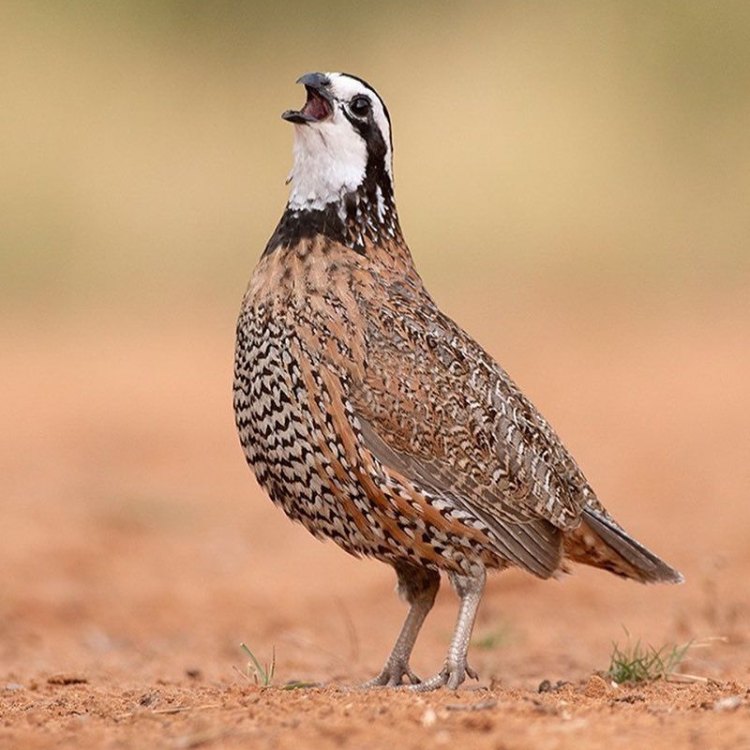
The Northern Bobwhite: The Enduring Icon of North America
Disclaimer: The content provided is for informational purposes only. We cannot guarantee the accuracy of the information on this page 100%. All information provided here may change without prior notice.

